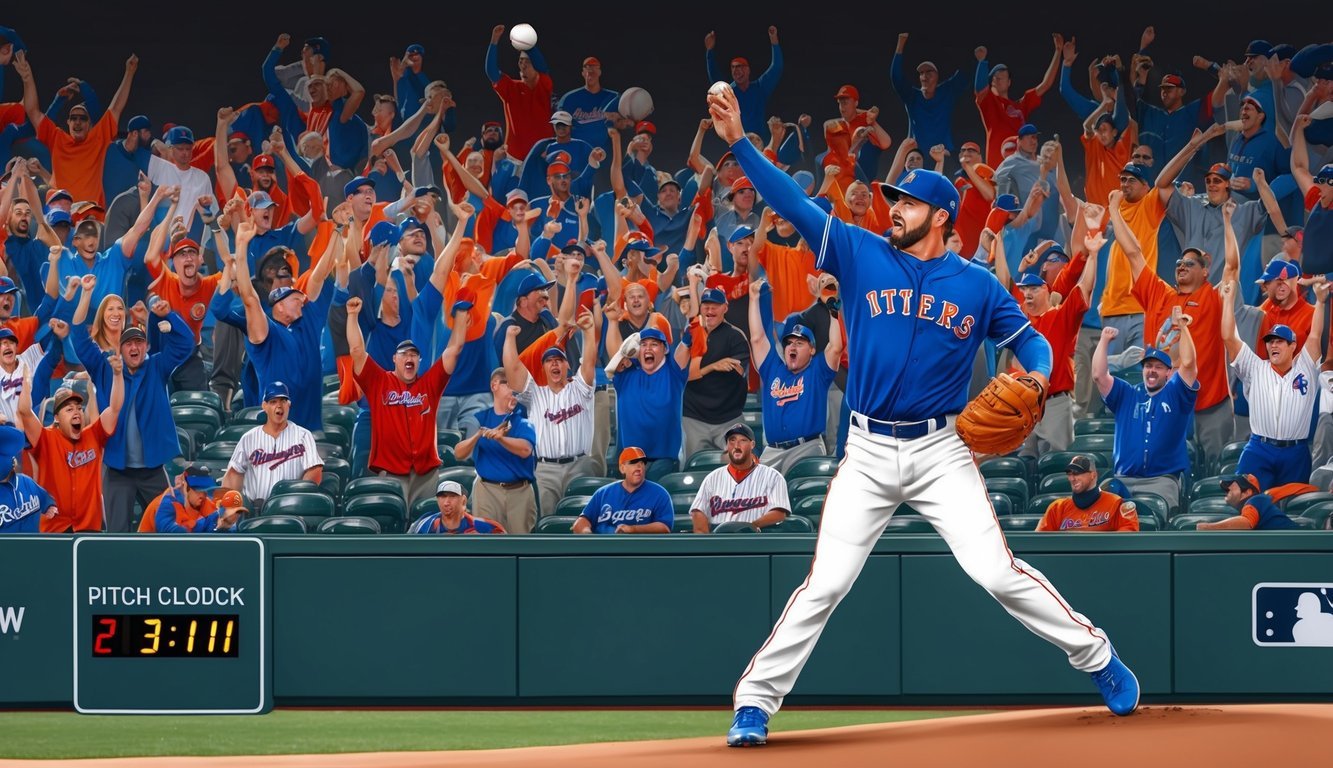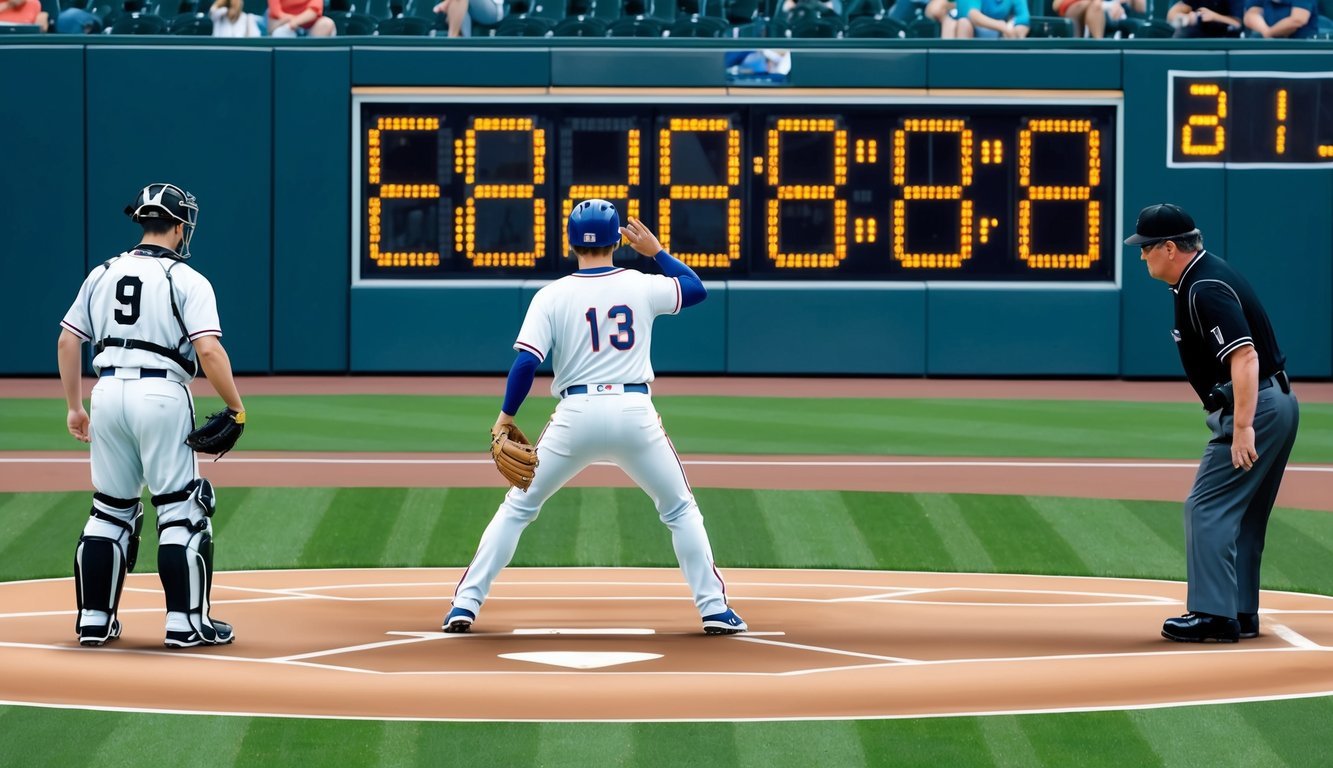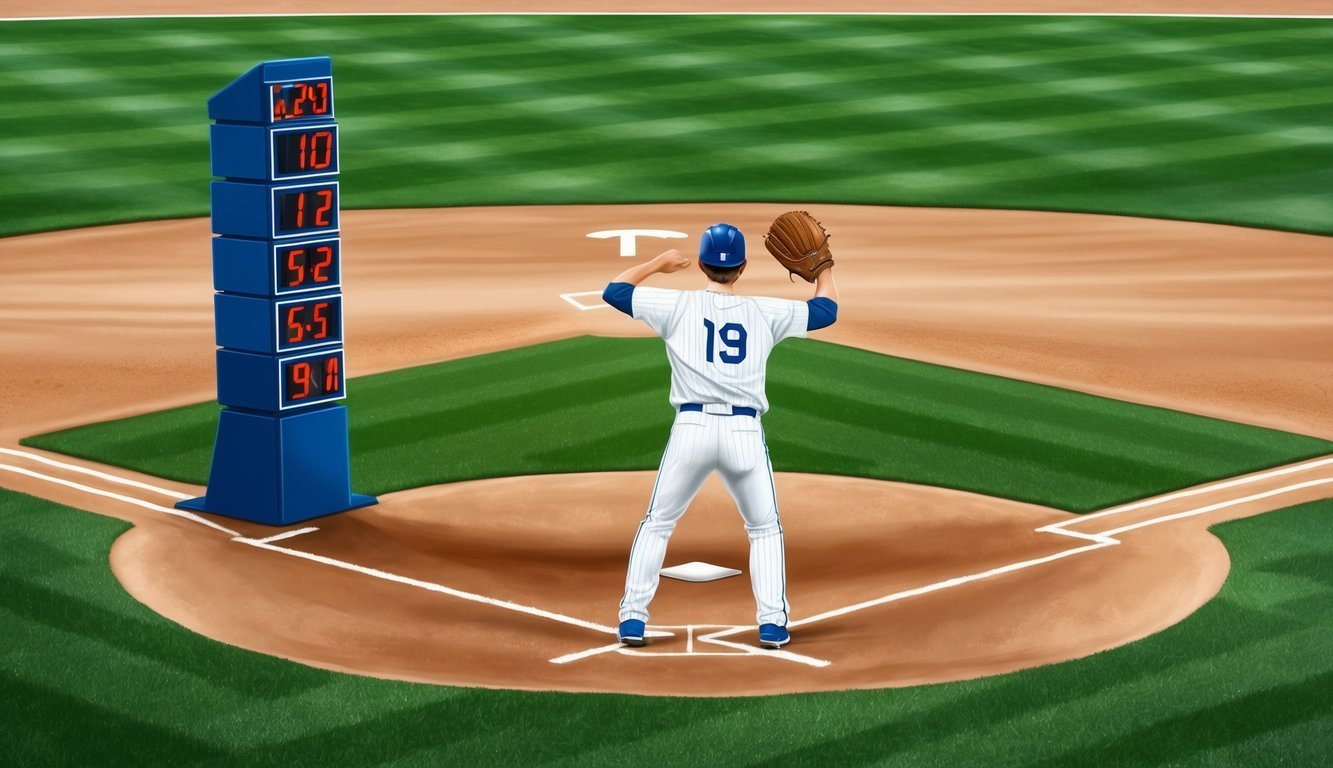Baseball fans have witnessed a significant change to America’s favorite pastime.
The 2023 MLB season introduced the pitch clock, a new rule aimed at quickening the pace of play. The pitch clock gives pitchers 15 seconds to throw with bases empty and 20 seconds with runners on base, while batters must be ready in the box with 8 seconds remaining.
This innovative timekeeping measure has already made a noticeable impact on game length and player strategy.
Pitchers and batters alike have had to adapt their routines to avoid penalties.
The clock resets after foul balls and mound visits, adding an extra layer of strategy to the game.
The pitch clock represents a bold step by Major League Baseball to address long-standing concerns about the pace of play.
Early results suggest it’s achieving its goal of creating a more dynamic, faster-paced game that appeals to both die-hard fans and newcomers to the sport.
As players continue to adjust, the pitch clock promises to reshape the rhythm of baseball for years to come.
Understanding the Pitch Clock
The pitch clock is a game-changing addition to baseball aimed at speeding up play.
It sets strict time limits for pitchers and batters between pitches, fundamentally altering the rhythm and strategy of the game.
Origins and Purpose
Major League Baseball introduced the pitch clock in 2023 to address growing concerns about game length.
Longer games were seen as a barrier to attracting new fans and retaining viewer interest.
The clock’s primary goal is to reduce dead time between pitches and keep the action moving.
Baseball executives hoped the new rule would shave significant time off the average game length.
Early results have been promising, with many games finishing 20-30 minutes faster than before.
The pitch clock has also increased the pace of play, creating a more dynamic and engaging experience for fans.
Clock Mechanics and Rules
The pitch clock starts at 15 seconds with no runners on base and 20 seconds with runners on.
Pitchers must begin their motion before the clock hits zero.
Meanwhile, batters must be in the box and alert to the pitcher with 8 seconds remaining.
Key rules:
- Pitcher violations result in an automatic ball
- Batter violations lead to an automatic strike
- Pitchers get two “disengagements” (step-offs or pickoff attempts) per plate appearance
The clock resets after each pitch, pickoff attempt, or time granted by the umpire.
Intentional walks and substitutions also pause the timer.
Pitcher’s Adjustments
Pitchers have had to make significant adjustments to comply with the new rules.
Many have streamlined their pre-pitch routines, eliminating unnecessary movements or habits that could eat up precious seconds.
Some pitchers have reported feeling rushed, especially in high-pressure situations.
However, many have adapted well, finding a rhythm that allows them to work efficiently without sacrificing performance.
Key adjustments include:
- Simplifying wind-up motions
- Reducing time between pitches
- Improving conditioning to maintain focus and stamina
Pitchers who thrive under the new system often credit improved focus and a more aggressive mentality.
The clock has forced them to trust their stuff and make quicker decisions on the mound.
Impact on Game Dynamics
The pitch clock has significantly altered the rhythm and flow of baseball games.
It’s reshaping how players approach each at-bat and forcing faster decision-making on the field.
Pace of Play Enhancements
Games now move at a brisker tempo.
The 20-second pitch clock with runners on base keeps pitchers from dawdling.
Meanwhile, batters must be ready within 8 seconds, cutting down on time-consuming rituals.
This quicker pace has reduced average game times by about 30 minutes.
Fans are seeing more action in less time.
There’s less dead time between pitches, creating a more engaging experience.
The accelerated rhythm has led to an uptick in stolen base attempts.
Runners are capitalizing on pitchers who struggle to adapt to the new timing constraints.
Strategy Alterations for Pitchers and Batters
Pitchers are adjusting their routines to meet clock requirements.
Some are simplifying their windups or pitch selection process.
Others are working on quicker pickoff moves to keep runners honest.
Batters face new challenges too.
They have less time to analyze pitches and adjust their approach mid-at-bat.
This has led to more aggressive swings early in the count.
Teams are rethinking their bullpen strategies.
With less time between pitches, relievers need to warm up faster.
Managers must be more decisive about pitching changes.
The pitch clock is also impacting plate discipline.
Some batters are swinging at more pitches to avoid automatic strikes from clock violations.
Player and Fan Reactions

The introduction of the pitch clock has sparked diverse reactions across the baseball world.
Players, fans, and leagues at different levels have experienced significant changes in gameplay and atmosphere.
Feedback from the Major Leagues
Major League players have shown mixed feelings about the pitch clock.
Some pitchers, like Marcus Stroman of the Chicago Cubs, have adapted well.
Stroman pitched six shutout innings in a game after the rule change.
Other players appreciate the faster pace, noting increased excitement and engagement.
Infielders have reported feeling more alert during games.
The quicker tempo keeps them on their toes, potentially improving defensive performance.
However, some players express concerns about the reduced time between pitches, fearing it might affect their preparation and focus.
MLB officials highlight the positive impact on game duration and fan experience.
They emphasize that most players are adjusting smoothly to the new rhythm.
Adaptation in the Minor Leagues
Minor League Baseball has been a testing ground for the pitch clock.
Players in these leagues have had more time to adjust, providing valuable insights for the majors.
Many minor league pitchers and batters now view the clock as a normal part of the game.
Coaches in the minors report improved focus from their players.
The faster pace has encouraged more efficient practices and pregame routines.
Some minor league stadiums have seen increased attendance, possibly due to shorter, more action-packed games.
Young prospects coming up through the minors are now entering the majors already accustomed to the pitch clock, easing their transition to the big leagues.
Fan Engagement and Perception
Fans have largely embraced the pitch clock.
Many appreciate shorter game times, which make attending weeknight games more feasible.
The increased pace has also led to more stolen base attempts, adding excitement for spectators.
Some longtime fans initially expressed concerns about changing baseball’s timeless nature.
However, many have come to enjoy the quicker rhythm.
Families with young children find the shorter games more manageable.
TV ratings for MLB games have shown positive trends since the introduction of the pitch clock.
Broadcasters report that the faster pace allows for more engaging commentary and analysis between plays.
Rules and Enforcement

Major League Baseball introduced pitch clock rules to speed up the pace of play.
The new regulations set strict time limits for pitchers and batters, with specific penalties for violations.
Regulating the Pitch Clock
Pitchers have 15 seconds to begin their motion with bases empty and 20 seconds with runners on base.
Batters must be in the box and alert to the pitcher with 8 seconds left.
The clock starts when the pitcher receives the ball and stops when they begin their pitching motion.
Umpires use visible timers in the outfield and behind home plate to track these intervals.
Pitchers are allowed two “disengagements” per plate appearance, which include pickoff attempts or stepping off the rubber.
Consequences of Violations
If a pitcher fails to begin their motion before the clock expires, an automatic ball is called.
Batters who aren’t ready in time receive an automatic strike.
These penalties can significantly impact the count and game outcome.
Repeat offenders may face additional disciplinary action from the league.
Teams have adapted their strategies to comply with these rules, often practicing with pitch clocks during spring training.
Umpires play a crucial role in enforcing these regulations, closely monitoring both pitchers and batters throughout each at-bat.
The new rules have generally been successful in reducing game times and increasing action on the field.
The Future of the Pitch Clock

The pitch clock has already made a significant impact on Major League Baseball.
Its future will likely involve ongoing adjustments and potential expansion of its use.
Predictions for Upcoming Seasons
MLB’s competition committee will closely monitor the pitch clock’s effects in coming seasons.
Teams and players are expected to further adapt their strategies around the timer.
Pitchers may develop new techniques to maximize their allotted time.
Batters could refine their routines to stay focused while working faster.
Spring training will serve as a crucial testing ground for any proposed tweaks.
Commissioner Rob Manfred has expressed satisfaction with the clock’s results so far.
This suggests the league will likely keep the core rules in place.
Fan reactions will play a key role in shaping the clock’s future.
If game times continue to decrease and excitement levels rise, support for the timer may grow even stronger.
Potential Rule Adjustments
The league may consider fine-tuning the pitch clock rules based on data and feedback.
Possible changes could include:
- Adjusting the time allowed between pitches
- Modifying rules for runners on base
- Tweaking the number of mound visits permitted
MLB might explore expanding the clock’s use in other areas.
This could involve timers for pitching changes or between-inning breaks.
Additionally, this initiative could aim to streamline the pace of play, which has been a topic of concern among fans and players alike.
By implementing timers during pitching changes or between-inning breaks, MLB hopes to keep the excitement flowing and maintain audience engagement.
Furthermore, as fans often seek clarity on how games can stretch on, the concept of ‘world series extra innings explained‘ could provide the necessary insights into how these new regulations might influence high-stakes moments in a playoff series.
The competition committee will likely test any proposed adjustments in the minor leagues first.
This approach allows for real-world evaluation before implementing changes at the highest level.
